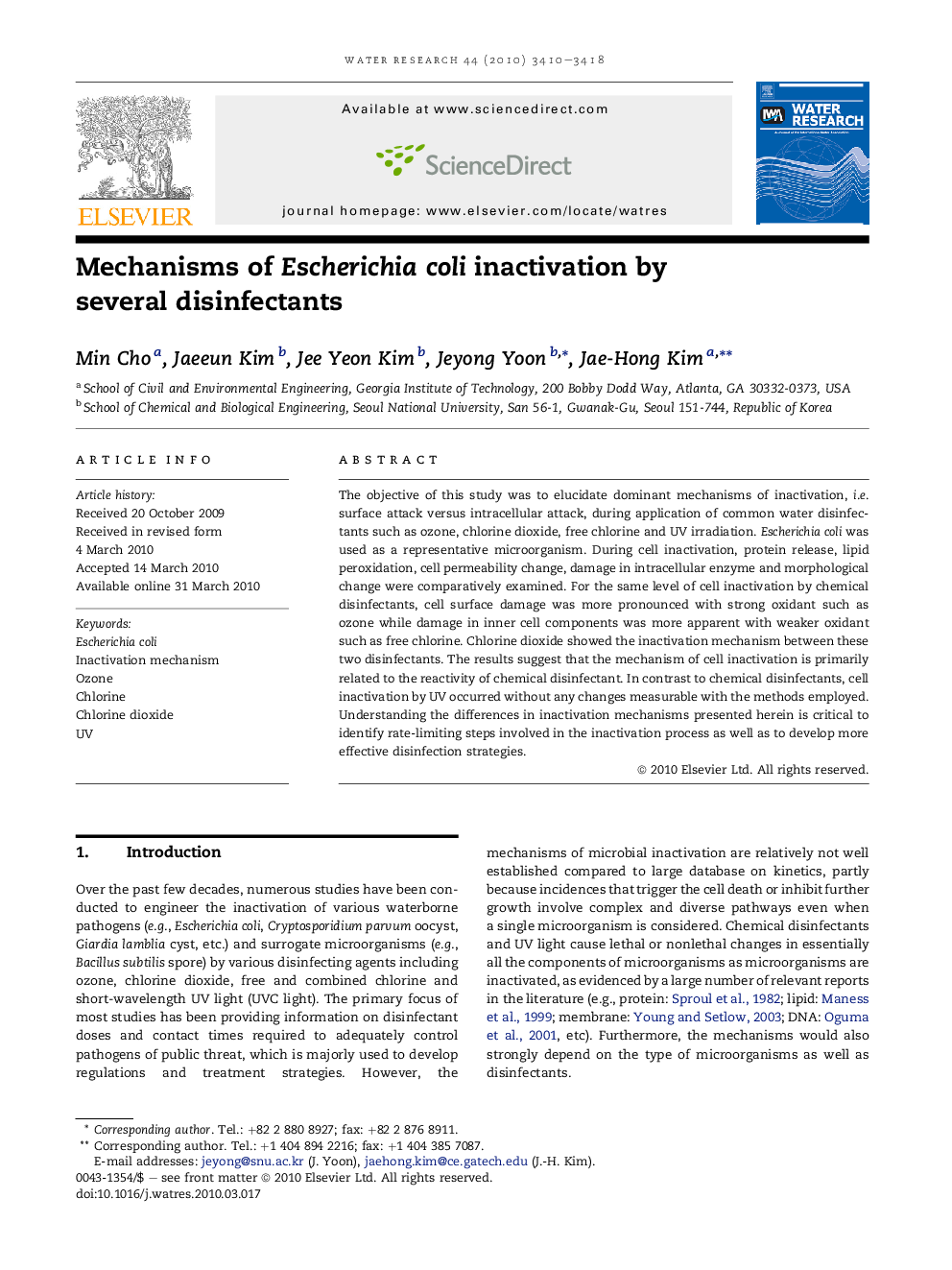| Article ID | Journal | Published Year | Pages | File Type |
|---|---|---|---|---|
| 4484893 | Water Research | 2010 | 9 Pages |
The objective of this study was to elucidate dominant mechanisms of inactivation, i.e. surface attack versus intracellular attack, during application of common water disinfectants such as ozone, chlorine dioxide, free chlorine and UV irradiation. Escherichia coli was used as a representative microorganism. During cell inactivation, protein release, lipid peroxidation, cell permeability change, damage in intracellular enzyme and morphological change were comparatively examined. For the same level of cell inactivation by chemical disinfectants, cell surface damage was more pronounced with strong oxidant such as ozone while damage in inner cell components was more apparent with weaker oxidant such as free chlorine. Chlorine dioxide showed the inactivation mechanism between these two disinfectants. The results suggest that the mechanism of cell inactivation is primarily related to the reactivity of chemical disinfectant. In contrast to chemical disinfectants, cell inactivation by UV occurred without any changes measurable with the methods employed. Understanding the differences in inactivation mechanisms presented herein is critical to identify rate-limiting steps involved in the inactivation process as well as to develop more effective disinfection strategies.
